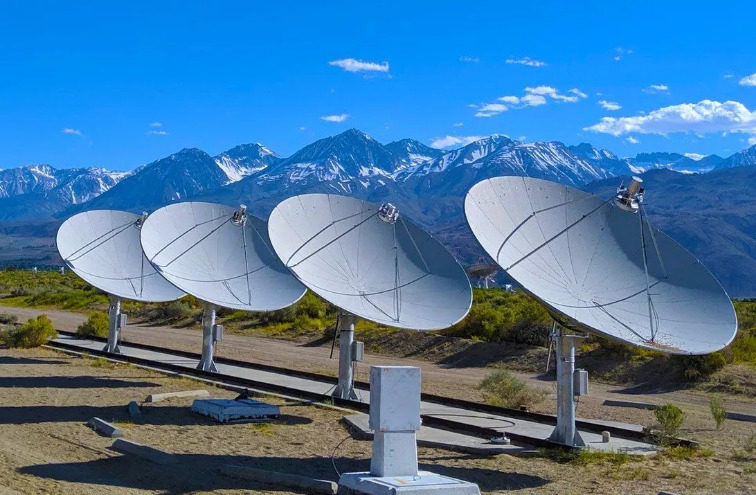
© Caltech/OVRO/G. HallinanThe Owens Valley Array in California's Sierra Nevada mountains.
The sources of these so-called "
fast radio bursts" remains a mystery, but recently researchers have been honing their ability to locate their origins.
On Tuesday, a team using CalTech's Owens Valley Radio Observatory near Bishop, California, reported that it managed to capture a new, non-repeating signal dubbed FRB 190523 and trace it back to a galaxy nearly 8 billion light-years away.
A number of possible explanations for what causes FRBs have been proposed, ranging from powerful neutron stars to extraterrestrial intelligence.
An accelerated article preview of the OVRO discovery was
published online in the journal Nature, less than a week after an Australian team working with the Australian Square Kilometre Array Pathfinder announced it had
also traced a non-repeating burst back to its source galaxy, some 4 billion light-years away.
As if that wasn't enough FRB poppin' off action for a single week,
a Russian observatory also reported a batch of nine more FRBs, including a new repeater. Repeating FRBs are kind of a big deal because they're rare (the latest from Russia is just the third ever to be captured) and easier to trace to a source galaxy.That's a lot of fast radio burst news for just one week, but even still
the nature of FRBs remains one of the biggest mysteries in space science. Offering a little more light, the CalTech team traced FRB 190523 back to a galaxy similar to our own Milky Way, but different from the dwarf galaxy that produced the famous first repeating burst, FRB 121102.
"This finding tells us that every galaxy, even a run-of-the-mill galaxy like our Milky Way, can generate an FRB," says
CalTech's Vikram Ravi, lead author of the new paper in
Nature, in a release.
Ravi also says future radio telescope arrays like the Deep Synoptic Array, set to open in 2021, will allow researchers to catch and trace many more FRBs.
"Astronomers have been chasing FRBs for a decade now, and we're finally drawing a bead on them. ... Now we have a chance of figuring out just what these exotic objects might be."
Whatever the source turns out to be, it's worth remembering that the mysterious signals travelled billions of years to reach us, so if the explanation is aliens, they're some very ancient aliens.
The phraseology of the question assumes something not in evidence.
In recent decades, we have established observational programs to find various phenomena and devoted more and more money/effort to do so, developed more accurate/sensitive sensors and detectors, developed more sophisticated processes to extract data from noise, etc., etc., etc. This should obviously lead to us "discovering" more things about the universe.
That does NOT necessarily indicate a "sudden surge in activity", but simply a sudden surge in discovery - a big, big difference.